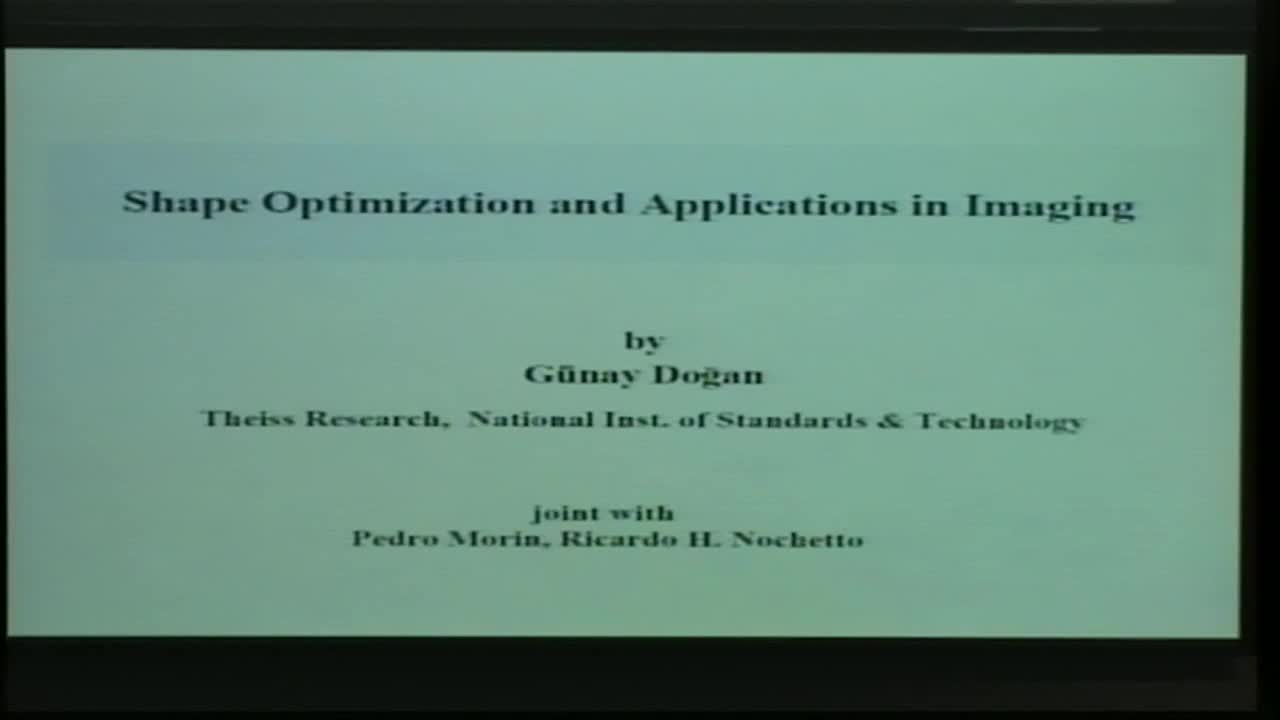Shape optimization and applications in imaging
Presenter
July 16, 2013
Keywords:
- Shape optimization
MSC:
- 49Q10
Abstract
Many natural phenomena and engineering problems can be modeled as shape optimization problems, in which our goal is to find shapes, such as curves in 2d or surfaces in 3d, minimizing certain shape energies. Examples of such problems are modeling of crystalline interfaces in material science, vesicles in biology, and image segmentation in computer vision. Finding computational solutions for such problems requires performing an optimization over a space of candidate shapes. In this talk, I will introduce a methodology to compute the optimal shapes in such scenarios. I will first describe how we can use shape calculus to derive a gradient descent flow for a given shape energy. The gradient descent flow can be used to deform a given initial shape towards a minimum of the energy in an iterative manner. I will describe how to discretize the gradient descent flow using the finite element method. Then I will explain how these ingredients can be put together in an effective shape optimization algorithm. I will underscore the role of errors and adaptivity, and I will explain the role of stopping criterion and step size selection in devising an efficient and robust algorithm. I will demonstrate the effectiveness of the method with several examples from image processing.
